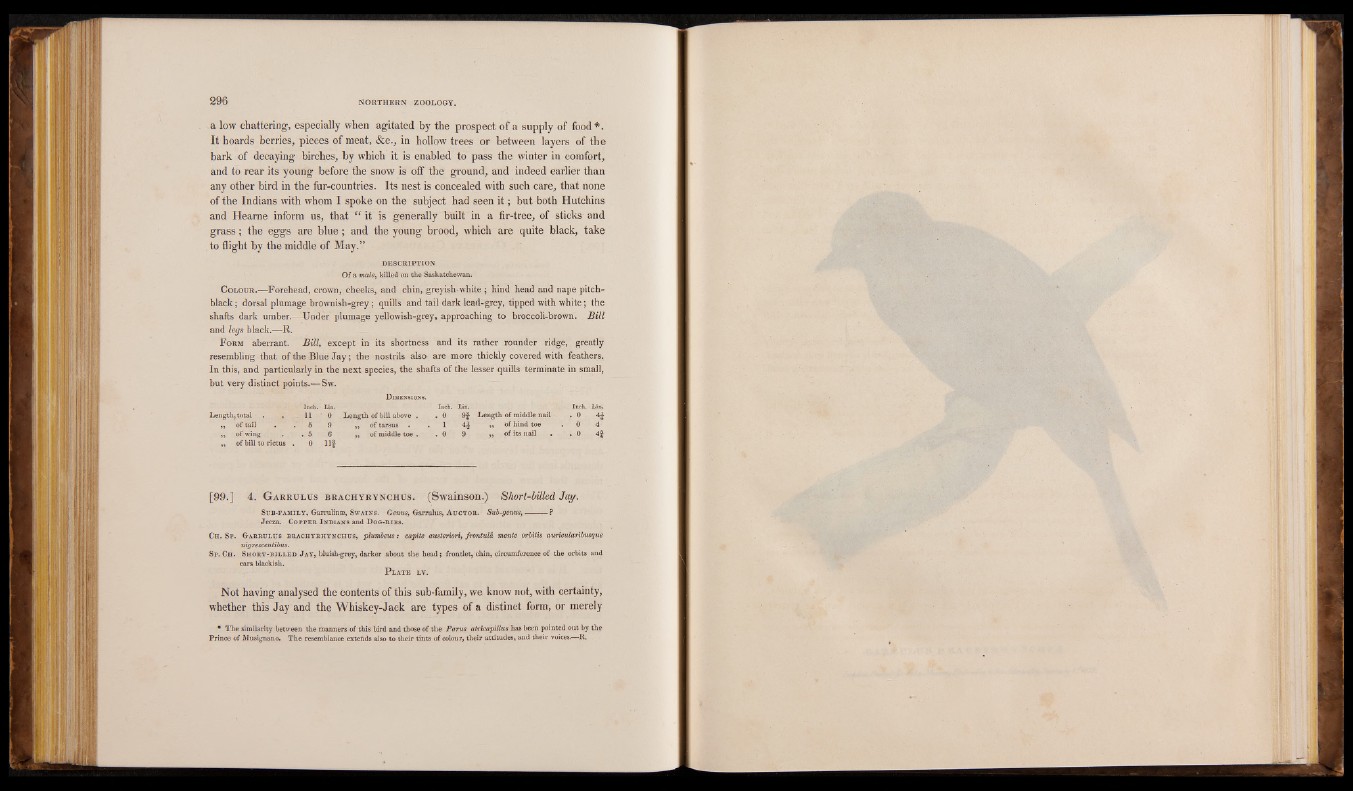
a low chattering’, especially when agitated by the prospect of a supply of food *.
It hoards berries, pieces of meat, &c., in hollow trees or between layers of the
bark of decaying birches, by which it is enabled to pass the winter in comfort,
and to rear its young before the snow is off the ground, and indeed earlier than
any other bird in the fur-countries. Its nest is concealed with such care, that none
of the Indians with whom I spoke on the subject had seen it; but both Hutchins
and Heame inform us, that “ it is generally built in a fir-tree, of sticks and
grass; the eggs are blue; and the young brood, which are quite black, take
to flight by the middle of May.”
DESCRIPTION
Of a male, killed on the Saskatchewan.
C olour.—Forehead, crown, cheeks, and chin, greyish-white; hind head and nape pitch-
black ; dorsal plumage brownish-grey; quills and tail dark lead-grey, tipped with white; the
shafts dark umber.—Under plumage yellowish-grey, approaching to broccoli-brown. Bill
and legs black.—R.
F orm aberrant. Bill, except in its shortness and its rather rounder ridge, greatly
resembling that of the Blue Jay; the nostrils also are more thickly covered with feathers.
In this, and particularly in the next species, the shafts of the lesser quills terminate in small,
but very distinct points.—Sw.
D imensions.
Inch. Lin. Inch. Lin. Inch. Lin.
Length, total . , 11 0 Length of bill above . . 0 9Î Length of middle nail . 0
,, of tail . ,I 5 9 ,, of tarsus . 1 1 „ of hind toe . 0 4
of wing ..
,, of bill to rictus . 0
6
Ilf
„ of middle toe . . 0 9 ,, of its nail . . 0
[99.] 4. Garrulus brachyrynchus. (Swainson.) Short-billed Jay.
Sub-f a m il y , Garrulinae, Sw a in s. Genus, Garrulus, A u c t o r . Sub-genus, --------?
Jeeza. Co p p e r I ndia ns and D og-r ib s .
Ch . Sp . G a r r u lu s b r a c h y r h y n c h u s , plumbeus: capite austeriori, frontula mente orbitis aurioularibusque
nigrescentibus.
Sp. Ch . Sh o r t -b il l e d J ay, bluish-grey, darker about the head; frontlet, chin, circumference of the orbits and
ears blackish.
P late lv.
Not having analysed the contents of this sub-family, we know not, with certainty,
whether this Jay and the Whiskey-Jack are types of a distinct form, or merely
• The similarity between the manners of this bird and those of the Parus atricapillus has been pointed out by the
Prince of Musignano. The resemblance exteftds also to their tints of colour, their attitudes, and their voices.—R.